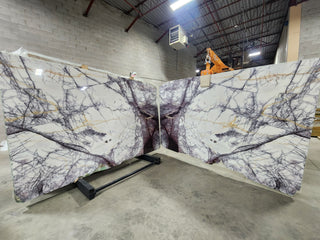In a world increasingly driven by engineered perfection and laboratory-enhanced performance, natural materials continue to seduce us not with flawlessness, but with soul. Among the many stones drawn from the earth’s crust, marble stands not simply as a material—but as a legacy, a language, and a living narrative etched in mineral veins.
While quartzite may often be praised for its hardness, durability, and resistance to etching, those qualities alone do not define greatness. What elevates marble above its rivals—quartzite included—is not its capacity to resist time, but its ability to embody it. Marble is superior because it is more than strong—it is storied, expressive, and deeply human.
1. Aesthetic Supremacy: The Artistry of Veins
Marble is nature’s painter and sculptor. No two slabs are ever the same, and within each lie ethereal veining patterns, soft gradations of color, and a translucent quality that seems to capture light from within. This depth and movement cannot be manufactured—it can only be revealed.
Quartzite, in comparison, often presents a more crystalline and rigid aesthetic. While it is striking in its own right, it lacks the visual poetry of marble—the sense that what you’re seeing is not just color, but a story of metamorphosis, captured in delicate swirls.
2. Touch and Soul: The Tactile Experience
Marble invites contact. Its surface, whether polished to a mirror or honed to a silky matte, responds to the touch with warmth and softness. There is a tactile intimacy to marble that quartzite’s hardness cannot replicate.
This is not trivial—it’s sensory architecture. In spaces meant to be lived in, such as kitchens, bathrooms, and foyers, materials should welcome interaction. Marble wears in, rather than out. It takes on the patina of life, and in doing so, it becomes more beautiful with age—like leather, or good wine.
3. Workability: The Sculptor’s Stone
There’s a reason Michelangelo carved his David from Carrara marble and not quartzite. Marble’s relative softness (compared to quartzite) is not a weakness, but an invitation to creativity. It is more workable, more responsive to the chisel, the blade, the tool.
This makes marble not only the preferred medium of artists, but also of architects and fabricators who seek precise detailing—edges, inlays, fluting, or curves that quartzite simply resists.
4. Cultural and Historical Weight
Throughout history, marble has adorned temples, palaces, cathedrals, and monuments. It is the stone of empires, from the Parthenon to the Vatican, and of civilizations who sought to leave eternity in their wake.
Quartzite, though geologically older in some cases, lacks this cultural gravitas. It does not hold the same symbolic resonance. Choosing marble is not merely a design decision—it is a gesture toward legacy.
5. Patina and Personality
While quartzite maintains its surface with stoic persistence, marble evolves. Yes, it may stain, etch, or develop a scratch—but this is not degradation. It is personalization. It is the way the stone reflects its environment and use.
In high-end design, perfection is often sterile. True luxury lies in authenticity—and marble, with its graceful aging and living surface, tells the truth of its surroundings. No engineered surface can do the same.
6. Sustainability and Repairability
Marble, when maintained properly, can last for centuries and is easier to restore than quartzite. It can be repolished, re-honed, or even repaired in place. Unlike harder stones that may crack under pressure and resist refinishing, marble is forgiving and renewable.
In an age focused on sustainability, this capacity for renewal is not just a technical benefit—it’s an ethical one.
Conclusion: The Stone That Breathes
Quartzite may win on paper—harder, more resistant, less prone to etching. But marble wins in person. It lives and breathes with its surroundings, embracing change, celebrating imperfection, and offering warmth in a world often too cold with precision.
To choose marble is to choose more than beauty. It is to welcome narrative, texture, transformation. It is to recognize that strength is not always in resistance—but sometimes, in receptivity.
Marble is not perfect.
That is precisely why it is timeless.

